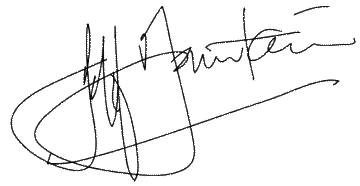Sunday, July 6, was the Festival of Jan Hus. For on that date in 1415, the Czech reformer was burnt at the stake as a heretic during the Papal Council, held in Constance on the Swiss-German border. Everyone knows Luther and Calvin, but the story of Europe’s first Reformation, a whole century ahead of the rest of Europe, remains largely unknown.
After the first intense week travelling on the Heritage Tour, we spent a quiet weekend in Herrnhut. Originally a settlement of descendents from the Czech Reformation, Herrnhut lies on the border between Germany, Poland and the Czech Republic. These settlers arrived in 1722, three centuries after Hus’ martyrdom. They traced their spiritual heritage back to the Hussites, followers of one of the great Czech heroes.
In the Sunday morning service of the Brudergemeinde in the all-white church hall, the pastor explained that a number of the congregants were away across the border that morning, commemorating Hus’ death with Czech brothers and sisters.
Later the pastor told me that the remembrance service was being held somewhere among the rocky formations in the mountains of northern Czech Republic. Carved in the rocks was the word Kalich (chalice), he said, where during the centuries of harsh persecution the Brethren met in secrecy to hear the Word and share the cup.
Armed with that snippet of information, we googled ‘Kalich’ and ‘Czech Brethren’ and found a place name, Besedice and a map. The text described a labyrinth of ravines, passages and caves. In the ages of persecution, it read, many Czech Brethren found a hiding place there.
The next morning we headed south from Herrnhut, instructing our gps navigator to find Besedice. We too wanted to witness the location where generations of believers had broken bread together in secret.
South of Liberec our navigator led our two vehicles off the motorway through a winding forest valley road. A spectacular castle ruin suddenly loomed above the trees, crowning a rocky outcrop, a colourful pennant flying in the breeze. We followed a great rock wall, with vertical fissures creating the illusion of a giant denture, down the valley and across a river. Surrounded by great rock outcrops in the forest, we climbed a narrow country road leading through the small village of Besedice, and finally arrived at a sign pointing along a track into the woods indicating ‘Kalich, one kilometre’.
Proceeding further on foot, we came to a bluff with a panoramic view of the Mala Skala valley. Generations of Czech Brethren would have paused on this spot to take in the vista of this peaceful valley, away from the prying eyes of the authorities.
Below us we glimpsed a maze of stoney passages and ridges, which drew us further down the trail. Soon we found ourselves dwarfed by giant slabs of rock seemingly arranged side by side in an unfinished open-air cathedral.
So this must be the place where the believers met in secret! Two or three of our group pressed on to explore the area, while those who remained began singing, ‘How great thou art’. When the others returned, they reported they had heard nothing of the singing and that when they themselves got separated, they could hardly hear each other calling. It seemed the perfect secret meeting place.
A few hours later we were standing in the Old Town Square of Prague before the great bronze statue of Hus and his followers. A whole century before Luther, Hus had preached to large crowds in the Bethlehem Chapel in their own language, not Latin. Prague had been the heart of the Czech Reformation for two whole centuries. The city and most of the surrounding country was largely Hussite and later Protestant.
But the end began after the uprising of the Czech nobles against the repressive Hapsburg regime. When in 1620 the Protestants lost the Battle of White Mountain (today within Prague’s suburbs), the retribution was merciless. Twenty-one white crosses paved into the Old Town Square commemorate the beheading of the leading Protestant nobles.
That ushered in over two centuries of persecution of Protestants. Believers were forced to recant and convert to Catholicism, be killed, go underground or flee the country. Some followed Comenius, their last bishop, across the border to Poland. Others gathered in secret places like Kalich for worship and encouragement. And in 1722, more refugees slipped across the northern border into Saxony to establish Herrnhut., the little town that has blessed the world.
Till next week,
Till next week,
